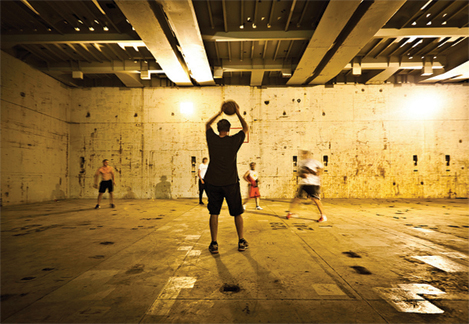Should you worry even if your injury happened a long time ago?
By Dr. Todd B. Lang


The most common ways people get blunt force trauma in sports is boxing, wrestling, basketball, football, and racketball. We have all seen it, the swollen eyelids with black and blue bruising all along the brow and cheek bones! Sometimes the force is so great that the wall of the eye socket is fractured. This is a call a “blowout fracture”. When this occurs there is often an injury to structures inside the eye. The ciliary body (faucet), iris, and trabecular meshwork (drain) work together to maintain the eye’s equilibrium. Sometimes a tear results to one of these structures as a result of the blunt force causing blood to leak into the eye. The presence of this blood can drive up the pressure inside the eye by clogging the “drain”. The faucet (ciliary body) continues to produce the watery fluid (aqueous) but because the drain (trabecular meshwork) is clogged, the pressure inside the eye goes up. While the wound is healing, medication is given to bring the intraocular pressure down. Sometimes surgery is necessary to control the pressure. Eventually the blood will dissipate and the patient can often discontinue the medications. If the pressure does not resolve when the blood is gone, then scarring of the drain structure (trabecular meshwork) is the most likely the cause for pressure remaining above normal.
Penetrating injury of the globe happens more often in work related accidents. Modern day construction has several high powered tools that make work faster and easier but more dangerous. Air compressed staple guns and nail guns can miss fire very easily even in the hands of experienced workers. The nails can glance off unexpected foreign objects in wood or concrete back toward and into the eye.
Another name for Traumatic Glaucoma is Angle Recession Glaucoma. Patients and doctors will be very aware of the acute symptoms and evidences of problems at the initial stages and sometimes the glaucoma will remain present going forward requiring treatment long term. For others, once the blood has subsided, the intraocular pressure normalizes and the patient is taken off the medication. The temptation is to forget about what happened over time without worry. Anyone who has had either the blunt force or the globe penetrating type injury with damage to the eye’s drainage mechanism should have yearly eye exams to monitor for changes in eye pressure and/or changes in the eye anatomy. The risk for the elevated pressure remains and developing glaucoma is much higher for those with a history of trauma as compared to those who have not.
Remember, for the majority of glaucomas there are no symptoms until it is too late. The testing done in a doctor’s office is far more sensitive in detecting early development of glaucoma long before a person can detect it under normal vision demands.
If you are 59 years old or more, your risk for glaucoma is close to 1 in 10! Don’t forget, glaucoma doesn’t have any symptoms until it is too late!
Call Dr. Lang’s office today to make sure you don’t have it. 941-637-0202
 Southwest Florida's Health and Wellness Magazine Health and Wellness Articles
Southwest Florida's Health and Wellness Magazine Health and Wellness Articles

